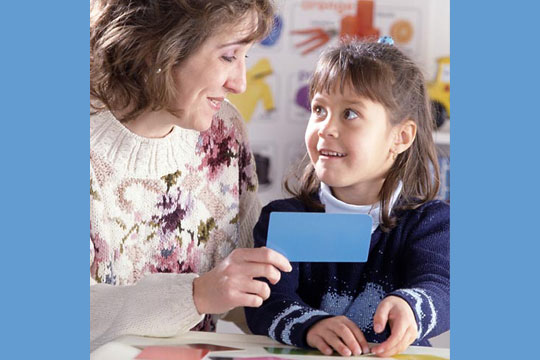
Working with young children can be a challenge, but children can also be fun and even give you insights into our faith when you look through their eyes of innocence and imagination. With that in mind, here are five tips for working with little children in faith formation sessions.
- Know that logic doesn’t always work. While it is possible to reason with older elementary students, as well as middle and high schoolers, young children have their own brand of logic that doesn’t always fall within the expectations of adult reason. If you ask a small child what he learned in the lesson about Adam and Eve and the child’s takeaway is that, “Everyone used to be naked but now it’s better because we all wear clothes,” don’t worry. A little more discussion may bring about an answer you’re looking for.
- Get in touch with your imagination. I’ve discovered that kids are much more willing and able to believe the mysteries of the faith because they have the imagination to believe in wondrous things. An adult entering the faith may look askance at the concept of transubstantiation, but if you tell young children that during Mass there is a miracle and Jesus becomes part of the bread, they will often go right along with it without question.
- Take a deep breath. Not all of us are gifted with patience. Little Amy’s constant questions regarding animals going to heaven—from lizards to whales—may be frustrating when the lesson is about caring for the poor. It’s important to remember to take these teachable moments and address the child’s concerns, even if you write her question on the board and tell Amy you will answer it at the end of class. When children bring questions to class, it may be because of something they heard or saw elsewhere. For example, Amy’s pet goldfish may have died, and she wants to know if she will see it in heaven. (For a good prayer for that, see When a Pet Dies.)
- Be willing to throw the lesson out the window. If Amy’s dead fish is really a major source of conversation and upset in your class, the Holy Spirit may be prompting you to have a discussion about death and love and the wonders of heaven. Amy may need her class to pray with her for her fish, and the other kids may want to share stories of their own losses. It’s OK to drop everything else and just go with the flow.
- Have fun. Enjoy your time with the little kids. Pray with them for their dogs, exclaim over their scribbly pictures of Noah and the ark, rejoice over their gift of dandelions, and listen for the Holy Spirit in their questions and comments. You’ll be glad—and even inspired—when you do.





I love #5. Many times, even with older children/teens you can sense the need to continue a conversation regarding one topic that has come up. Often something has occurred at school or home that many of the children are familiar and they have a need to sort it out. #2 Getting in touch with my imagination is a lot more difficult than when I was younger. Thank God it is the young who keep it alive. I think when their imagination is up and running, we should go with it as it will spark mine into full swing as well.
Yes, I love the imagination of young children they truly understand wonder and awe